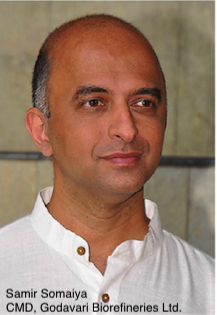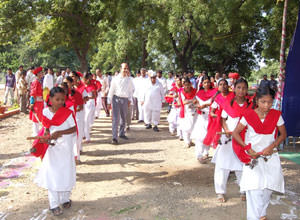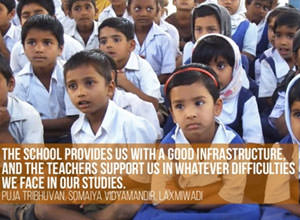July
July
Transition to Specialty chemicals
Chemical Engineering World | Jul 01, 2020
How is the market for green / renewable chemicals evolving globally and in India?
We see a big increase in the need for renewable/green chemicals. This trend is more visible globally. Large international companies are making public commitments to us renewable chemicals, biodegradable packaging, carbon neutral processes, and making a more sensitive approach to people, climate and the planet going forward. In this, there is a huge opportunity for companies in the renewable space to go forward.
To what extent renewable chemicals can replace the conventional chemicals and petrochemicals in India and what are the major concerns that will have to be addressed at various levels in India?
Renewable chemicals can be used in various ways and can be ‘Identical’ except that these are made from renewable sources. For example, one can make acetic acid from renewable sources that is made otherwise from petroleum feedstock. ‘Drop-ins’, and can completely substitute conventional materials; although they may be chemically different, with no loss of functionality. Green chemicals can also be completely different from material derived from conventional feedstock and have different properties but still may have the same end use. Some of the renewable chemicals may not have a fossil substitute.
In each of these cases, the substitution will depend upon many factors. One of the very first point is if the price of the renewable chemical can compete with that derived from fossil sources. Second, whether the end use segment is willing to pay a price premium for a renewable derived feedstock. We find that this is often the case in the skin care sector. In such cases, responsibly sourced, traceable, renewable and/or biodegradable chemicals can command a price premium from the end customer. Third point is whether the material properties can help command a better price. Finally, in some markets, the Governments are creating policies that promote the use of renewable raw materials. Since your question particularly concerned India. In my opinion, bio-ethanol is a ‘Drop-in’ and there is a favorable Government policy to help encourage that blend to help our energy security and a lower carbon future. For chemicals, the market needs to mature to give us more value. But I think that consumer preferences are changing, and there are niche markets that reward use of such chemicals, and it is a matter of time before some end use segments grow the use of these feedstocks.
How friendly are the policies in our country to support the growth of renewable chemicals and protect the domestic industry from imports?
In India, there are no policies for renewable chemicals. The Government has created policies for renewable fuel (ethanol blending), and also Bio-CNG. However, this support is not extended to the chemical sector. In the EU and the USA, there are significant policies encouraging the investment in research, pilot plant, and commercialization of renewable processes and technologies. Further, there are policies in place to influence the attractiveness of these products. The US Bio-Preferred Program is one such example. The Carbon markets are also another way to help the economic viability of such initiatives.
Tell us about the Godavari bio-refinery model and how has the organization continued to stay financially viable? How have you addressed the cost challenge across the customers in India though these lead to higher ROIs across for the user industries?
Godavari Biorefineries is using four strategies for the future. The Government has encouraged the making of ethanol from sugarcane juice or syrup for blending in petrol for our transportation needs. Godavari was one of the first companies to aggressively adapt to this environment and supplied a large quantity of ethanol for the purpose this past year. This provides us much needed optionality to swing between ethanol and sugar based on the demand supply gap in sugar or ethanol. Currently, we are increasing our ethanol capacity to 400,000 lpd. With this we will have a capacity of over 100 million litres of ethyl alcohol in a single location. In the chemical sector, we are making a transition to specialty chemicals. In the past few years, we have successfully introduced new chemicals that are in the fragrance or skin care field. We are also establishing more long term relationships with global companies that share our vision of a sustainable future, so that we can jointly develop products with their involvement. This ‘joint’ development approach helps us know the target product cost and quality of the customer. Achieving the same helps them achieve their ROIs. Bio-refining means products from agriculture and we work closely with the farmer to help enhance yields and productivity, in order for the farmer to be financially better off, and the farm and soil to be healthy. To promote well grown and well processed foods, we have established a brand ‘Jivana’ to promote pure and high quality food products that we need on a daily basis.
When & why did your organization stop producing acetic acid and took the decision to restart the business on demand in October 2018 which received USDA certification in next few months?
We stopped making Acetic Acid over a decade ago. In this case, we made the same chemical from renewable sources (ethanol) that is also made from fossil resources. With the reduction in import duties, the entire Indian alcohol based chemical industry that made acetic acid from ethanol found itself unable to compete with petroleum sources. Along with all the others, we too shut down. We reinvested and resumed the manufacture of acetic acid only on a very small scale. There are a few customers the world over desire to buy this product because their end market segment is ready to pay a premium for the same. This is a small market and the demand fluctuates. But we are hopeful that the market will grow.
Which is the best suited bio refinery model for India to realize the sustainability goal? How can we build world class bio refineries in our country?
I hope we are working on demonstrating that. It is a model that works closely with farmers. In India, farmers have small land holdings. Any engagement has to help them be financially sustainable and for the farm to be productive in the short and longer term. We are working with our farmers to reduce their water footprint, and encourage the use of intercrops to reduce fertilizer use and give them a dual income. Similarly, biorefining is the process of converting the feedstock into value added products. These find applications in foods, fuels, electricity, chemicals, pharmaceuticals, fragrance chemistry, bio materials, agrochemicals and much more. There has to be a thinking towards a circular and cascading biorefinery that continuously strives to find and add value. A few years ago, we installed an incinerator boiler to recover energy from our waste. Now, we are implementing a process to extract potash from the ash from the incinerator. This potash will then be sold to our farmers. Currently, India imports almost all its potash needs. Through this example, we are showing how we can cascade and add value, and the process is circular. As a country, we need research to keep imagining the future. Research and practice go hand in hand. In Europe, I have seen large pilot plants where lab work can be taken further. We need to have such facilities to further bio-refining in India.
How supportive is the National Biofuels Policy towards setting up 2nd generation bio-refineries and what are the challenges that still need to be addressed?
The National Biofuel policy helps the making of biofuels. India is an agrarian economy and has an abundance of biomass. However, the collection of the biomass will always be a challenge. So the availability of this biomass at the processing site is an entry barrier. At Godavari Biorefineries, we have invested much in energy efficiency and engineering to make available surplus bagasse on site for use as a next generation feedstock. Secondly, ethanol from biomass is what is called 2-G (2nd generation). These are possible, and we are seeing demonstration facilities around the world. However, these are expensive and are made possible with Government support and subsidy. The Government of India is also supporting the creation of such Greenfield facilities to make 2G ethanol. But as in every other location, these facilities are very expensive. The Government makes them possible with ‘Viability Gap Funding’. I believe that India should also experiment with our own model. We need to encourage ‘bolt on’ solutions of adding equipment and technology to existing infrastructure. For example, our sugar mills already have biomass on site and downstream ethanol facilities. A ‘bolt on’ approach will only add what is necessary to complete the 2G addition, reducing funding needs. The current biofuel policy provides for viability gap funding only for Greenfield facilities. It needs to be modified for ‘bolt on’ facilities as well. In summary, I think India has a great agriculture base. There is lots of biomass and we have the education and research system to dream. The market is large and people are imagining a better and more sustainable future for their children. Biorefining of biomass is the way for a more sustainable way of life.
Godavari Biorefineries Ltd earns USDA Certified Biobased Product Label (100% Biobased content) for NaturoBG ® (1,3-Butylene Glycol), Acetic Acid Glacial and Crotonaldehyde.
Biotech Express (Print- Vol.6- Issue 72) | Jul 18, 2019
How Somaiya Vidyavihar Turned Two Rural Marathi Schools into Model Institutions
SOCIAL.YOURSTORY.COM | Jul 01, 2015Knowledge only liberates
“What you get from society, you must return multifold.” That, in short, was Padmashree Karamshi Jethabai Somaiya’s philosophy, which is entrenched in the values and work of Somaiya Vidyavihar, a trust he established in 1959. Born in the early 1900s to a poor family, he could not study beyond grade VI. In 1939, a poorly educated Somaiya built sugar factories in Sakarwadi and Laxmiwadi in Maharashtra. The sweet success of his factories gave rise to the K. J. Somaiya College of Arts and Sciences in Mumbai and the Somaiya Vidyamandir Schools in Sakarwadi and Laxmiwadi, where most of his employees lived with their families. The Sakarwadi school was built on the banks of the Godavari for children of the Kopargaon taluka, Ahmednagar. Today, poor children from neighbouring villages like Wari, Sade, Bhojade and Dhotre in Kopargaon,n and Nighoj, Shirdi, Rui and Dorhale near Rahata taluka travel to attend classes.
In the rural landscape of Maharashtra, the Vidyamandir schools underwent a transformation 13 years ago when the President of Somaiya Vidyavihar and Chairman of the Godavari Biorefineries Ltd, Samir Somaiya, visited them with his two-year-old daughter. The fateful visit resulted in the establishment of schools that boast of science laboratries, movie halls, libraries, computer laboratries and a music hall today. The village children of Kopargaon and Rahata were no different to him than his daughter. Feeling they deserved the same quality of education as English-medium schools impart, he was renewed with strong determination to turn Jethabai Somaiya’s sweat and blood into model Marathi institutions.

Samir’s belief in developing regional language schools into bastions of knowledge has brought to rural Maharashtra a robotics workshop by K. J. Somaiya College of Engineering and Information Technology; sociology students and professors from S. K. Somaiya Degree College of Arts, Science and Commerce to develop both schools; Cornell University faculty and students to discuss teaching methods and science experiments; and ex-directors of the Nehru Planetarium who conduct star viewing field trips and play space documentaries for students (the schools have their own telescope). Samir Somaiya feels being born in a taluka is no reason why rural children shouldn’t be exposed to the rich world outside. That commitment to quality education has led to near perfect results at both schools, which perform well not despite being Marathi institutions, but because of it.

Good schools make good teachers
A testament to how access to hygiene can make or break a child’s future in India, Pare says parents are more confident sending children to school when they know it has good toilet facilities, especially if the child is a girl. As Mid-Day Meals are handled by Godavari Refineries, there’s better quality control compared to government schools.
A testament to how access to hygiene can make or break a child’s future in India, Pare says parents are more confident sending children to school when they know it has good toilet facilities, especially if the child is a girl. As Mid-Day Meals are handled by Godavari Refineries, there’s better quality control compared to government schools.
Pare talks about how infrastructure is important to education, whether it’s spacious rooms or ventilation. The walls are decorated with charts and designs by students to give them an ownership of the space. Sports, from football and hockey to rural games, music and dance play an important role in the school. “All the students,” Pare says, “are encouraged to participate and perform well in the inter-school competitions at the taluka-, district- as well as state-level. To give the children greater exposure, we often hold district level championships. This allows our students to meet students from across the state.”

The girls of Somaiya Vidyavihar
Puja Tribhuvan recently passed her SSC from Somaiya Vidyamandir, Laxmiwadi. From a very poor family, her father works as a wireman and her mother, in a sweet shop. She says, “We live in a rented house.” At Somaiya, Puja says she was only able to improve because of the unfaltering and patient support of her teachers. She especially found Sanskrit and English difficult before her teachers encouraged her. Puja says, “The school provides us with a good infrastructure, and the teachers support us in whatever difficulties we face in our studies.” She likes the visits by international guests and the routine Somaiya Vidyvihar visits from Mumbai.
Puja hopes to become an engineer one day. Ever since her impressive results, she has a renewed confidence, and genuinely believes that her aspirations are not fantasy. She says, “I can now look at the future with great hope and determination.” She adds: “Like our school teachers, other school teachers should be open and involved in the child’s development. They should be available to clear their doubts and difficulties so that students do not hesitate before approaching them.”
Devyani Gagare, from the same school, also has big ambitions. When she was only a child of four, her father abandoned the family. Ever since, she’s lived with her mother, a primary school government teacher. Girls in rural schools have very little exposure to sports, let alone a decent education. But with the backing of her teachers, Devyani is a state-level badmintonplayer, besides already being a district champion in table tennis. Devyani says, “The teachers are highly qualified,” and that the best part about her school is the sports facilities. Lucky enough to be a part of Somaiya Vidyamandir schook, she feels equally confident of her future as her peers.

In Sakarwadi, Tanuja Kale has just passed her SSC. Born to a farmer and housewife, she says she started school facing difficulties in many subjects. But with sustained effort on the school’s part, she was able to top the National Talent Search Examination.
Nevertheless, teachers like Pare have their work cut out for them. “For students with low-income backgrounds, even the basic needs are a challenge to be fulfilled. They do understand the importance of education, but are often not able to give the attention that it needs. For them, just making their daily living takes their time. They are not able to support their child at home for studying.” It’s easy to talk about preserving childhood, but poor students often have no choice but to lend a helping hand to support their families. When putting a meal in on the table becomes a matter of good fortune,, having an extra pair of hands to help is a desperate measure. “So,” Pare says, “we have to be understanding of their conditions, and ensure that the children remain motivated. Thus making education affordable and accessible is very important. Also important is for parents to see that the school is of a good quality, so making the sacrifices needed for the child to study there will be worth the effort.”
Link: http://social.yourstory.com/2015/07/somaiya-vidyavihar/
Click here to download the pdf file.
Somaiya Vidyavihar School Children from Ahmednagar Participate in Robotic Competition in Mumbai
Mumbai, Economic Times | Jul 15, 2015School children from Sharda English Medium School, Kopargaon; Somaiya Vidya Mandir, Lakshmiwadi & Somaiya Vidya Mandir, Sakarwadi participated in an exciting robotic competition organized by K. J. Somaiya Institute of Engineering and Information Technology, Mumbai.
This initiative by Somaiya Vidyavihar was done to ensure that Robotics that is part of the education system in the international schools in high schools globally and in cities in India is made available to the children in all their schools. Says, Dr. Dilip R. Pangavhane, Principal of K. J. Somaiya Institute of Engineering and Information Technology (KJSIEIT) “ Working with robots is a great way for encouraging interest in Science and Math. It inspires innovation, encourages creativity and analytical ability. At Somaiya Vidyavihar, we have a culture of sharing knowledge amongst all our institutions. We were thus very keen to ensure that the students of schools of Somaiya Vidyavihar, including the ones in rural areas also get the opportunity to learn robotics. We have been amazed at the level of interest, and talent that the children have shown”.
In June, KJSIEIT college students had visited the schools in Kopergaon and held a workshop to train the students in the most exciting field of Robotics.
Animesh Kukade, a class 9 student from Sharda English Medium School, Kopargaon said, “Robotics is fun. We have to coordinate many things at the same time, like the timing & speed of the robotic car, going over the obstructions, tracking the penalties and operating it. It is an amazing experience. The college students taught us everything in a simple manner and made us understand the basics very clearly. "
A Quality education initiative for rural children by Godavari Biorefineries Limited in association with Somaiya Vidyavihar -‐Sharda English Medium School, Kopargaon, Somaiya Vidya Mandir Laxmiwadi, and Somaiya Vidya Mandir, Sakarwadi.
Teachers, students from Somaiya Vidyavihar, Mumbai as well as guests from international colleges often visit the schools to share their knowledge. The success of the various initiatives has seen the children show great interest in their studies. The success of the efforts can be seen by the fact that each of the schools achieved over 90% results in SSC.
Somaiya Vidyavihar has over 34 educational institutions across Maharashtra and Karnataka.
Click here to download the pdf file.




